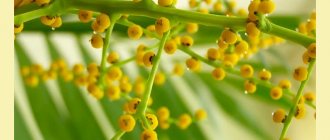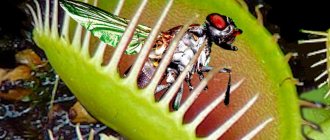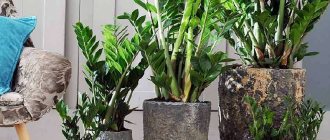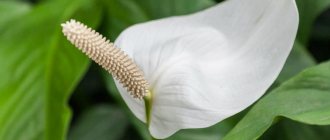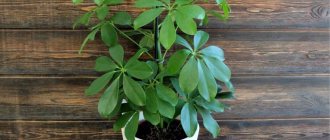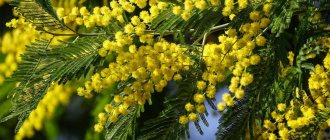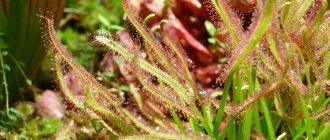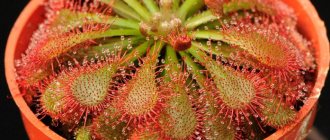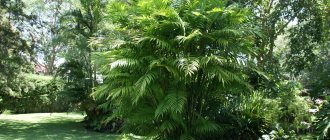Caring for an indoor Hamedorea flower should be special and correct. This is the only way your palm tree will grow beautiful.
House palms are a very popular and popular type of indoor plants. They are distinguished by their unusually beautiful appearance, which is not surprising, because they are exotic. One of the most beloved species of this plant among gardeners is Hamedorea .
It is noteworthy that this is not just a beautiful indoor flower. There are many beliefs and signs associated with this representative of the Palmovs. Therefore, it is not surprising that the interest of lovers of unusual home flora in the plant is growing. Read more below.
Where is the homeland of the domestic flowering Hamedorea palm tree: types, varieties, how it blooms, photos
Hamedorea blooms
Hamedorea is a perennial flowering plant native to the tropics. The flower is widespread in East Africa, Central America, and Madagascar . Also, several varieties of palm grow on the Crimean Peninsula, southern Europe and the Caucasus .
The characteristics of a flower directly depend on its variety. There are many varieties of this home flowering palm tree - indoor Hamedorea. Below you will find photos of some species and see how the plant blooms. The most popular types are:
Hamedorea graceful (elegans)
Hamedorea graceful (elegans):
- It is a perennial single-stemmed plant, growing up to 1.5-2 m in height .
- The trunk has a smooth surface and is covered, as a rule, with 6-7 pinnate leaves .
- Each of them is divided into 8-15 segments of a dark green hue, having a narrow lanceolate shape.
- The inflorescences are panicles, loose in texture, formed by cobs. The latter, in turn, consist of orange-red flowers.
- After the end of the flowering cycle, black berries appear in place of the flowers.
Hamedorea Ernest-August
Hamedorea Ernest-August:
- This type of flower has leaves that are dark green and not divided into segments.
- They look like large and wide plates, sometimes bifurcating at the tips.
- The plant does not have particularly vigorous growth. On the contrary, the pace of its development is slow.
- In general, this type of palm is characterized by a stem form. This means that one rhizome can produce only one stem.
- This culture blooms with red spherical flowers, which are collected in spreading inflorescences.
Hamedorea high
Hamedorea high:
- Already from the name you can roughly understand what the main features of this type of plant are.
- The stems of indoor culture are erect, similar in appearance to bamboo.
- When the leaves at the bottom fall off, and light ring-shaped spots appear instead.
- At the top of the stem there are 4-6 dark green pinnately dissected leaves.
- The narrow-lanceolate lobes are pointed at the edges.
- The plant blooms very beautifully, producing bright orange flowers that form panicles.
Hamedorea unicolor
Hamedorea unicolor:
- This is the most unpretentious type of indoor palm tree among all varieties. That is why it is often the choice of flower growers.
- The shoots of the plant grow slowly and rarely reach more than 100 cm in height.
- The form is characterized as bushy, which is facilitated by the formation of several thin additional shoots.
- At their tops there are leaves of a light green color and pinnately dissected shape.
- Hamedorea unicolor is distinguished by the rapid onset of the flowering period.
Hamedorea metallic
Hamedorea metallic:
- This type of palm tree has leaves that are dark green with a metallic tint. Due to this, this type of flower got its name.
- The leaves of the plant are solid and wide.
- As it develops, the palm trunk thickens and becomes woody.
- A palm tree growing in nature can reach 2 m in height , but in a flower pot where space is limited it will be smaller.
- The culture is characterized by good shade tolerance.
Hamedorea bridble
Hamedorea bridble:
- This representative of exotic indoor plants can grow up to one and a half meters. But it is noteworthy that this palm variety is a hybrid of the popular variety Elegance .
- However, the specimen in question has larger, brighter flowers, and the leaves and shoots are colored emerald.
- Proper care allows the plant to form a lush vegetation mass. It is characterized by an attractive appearance.
Of course, there are many more varieties of Hamedorea . About 120 species of this exotic plant are known But the most popular in home floriculture are the above-mentioned specimens.
Short description
Hamedorea belongs to the genus of monocots, family Arecaceae (Palm). All species - and there are more than a hundred of them - are low-growing palm trees with thin, erect stems. The leaves of Hamedorea are divided into long thin segments and collected in a rosette. Plants are dioecious. Male flowers are inconspicuous paniculate inflorescences. Women's - bright and single. The fruits are small, up to 1 cm in diameter.
In nature, the mountain or bamboo palm is found in Mexico and the tropical forests of America: that is, it prefers zones with a humid and moderately warm climate. Settles in the foothills, forming undergrowth. Some of the varieties that stand out for their unpretentiousness are cultivated.
Hamedorea: signs and superstitions
There are many signs and superstitions regarding the presence of certain plants in the house. For example, there is a well-known superstition that you should not bring lilacs into your living space, as this promises death to someone close to you. But all this is nothing more than a stupid fiction, in no way confirmed by real facts.
What about the Hamedorea palm? Are there any signs here - good or bad? Of course yes. Here are a few of them:
- Hamedorea is a source of powerful energy, so its presence in a room or office has a beneficial effect on the overall microclimate.
- In the room where the flower grows, people are filled with energy and get rid of the feeling of depression.
- All undertakings and plans will come true for the person caring for the exotic plant.
- The situation in the family is improving, misunderstandings, disagreements and scandals are becoming a rarity.
- Energy vampires try to stay away from people in contact with Hamedorea
- It is contraindicated for selfish individuals to keep such a palm tree next to them, because they may completely lose sensitivity to the feelings of family and friends.
- If there is coziness, tranquility and harmony in the house, then light and lush foliage predominates on the flower. If the branches darken and begin to wither, this indicates the presence of evil spirits and evil energy. By giving away its vital energy, the palm tree tries to cleanse the aura in the house.
Today it is generally accepted that Hamedorea brings only goodness to its owner. Thus, a person who takes care of a flower becomes more self-confident, calm and reasonable. But everything, of course, depends on one more subtlety - vocation. Thus:
- For creative individuals, the palm tree promises recognition, fame and success.
- For businessmen, the flower helps realize commercial plans.
- For athletes who love to care for Hamedorrhea, the indoor plant helps them reach new heights.
However, there is a negative superstition. Our ancestors believed that Hamedorea in the house brings misfortune and trouble. To avoid them, you need to bring the palm tree into the house correctly. Or rather, not bring it in in a pot, but bring it in on wheels, so carts, strollers and other small vehicles were used to transport the plant.
It is up to you personally to believe the signs and superstitions associated with the exotic flower in question. People are now less inclined to follow the warnings that their ancestors trusted.
Hamedorea plant: features of growing at home after purchase
Hamedorea plant
The Hamedorea plant is a flower that requires care. Provide it with optimal growing conditions - and it will please your eyes all year round. Study the features of growing a flower at home after purchase. The intensity of growth and development of culture depends on:
- Temperature indicator in the room
- Air humidity level
- Lighting
- Frequency and abundance of watering
- Substrate composition
- Added fertilisers, fertilizers
- Transplants
Do not forget that the flower needs shading, so place it away from intense light radiation. Also provide the flower with frequent watering. Avoid letting the soil dry out, otherwise the palm tree will simply die.
Time and features of transplantation
Flower growers usually transplant Hamedorea in late spring. Plants purchased in stores also require replanting - in this
In this case, it can be done at any time of the year.
Young palm trees are replanted once a year, and adult large plants once every two to three years, when the roots begin to occupy all the free space in the pots and come out through the drainage holes.
For each transplant, the pot should be wider than the previous one by 2-3 cm in diameter and higher. It is necessary to lay drainage made of expanded clay, small broken bricks or ceramic fragments at the bottom.
This will help remove excess water, preventing acidification of the soil and the development of infections that affect plant roots.
When replanting annually, you do not need to remove all the soil from the roots of the plant and trim them - the palm trees are simply transferred to a new pot.
The roots of plants bought in stores can be cleaned, but only a little.
The rhizomes of diseased plants require high-quality treatment; you need to wash them in water, remove shoots affected by rot, treat them with special means and sprinkle them with coal.
After this, the roots are carefully straightened and sprinkled with earth, lightly pressing it around the trunk.
Hamedorea flower blooming
The Hamedorea flower begins to bloom in the 3rd year from the moment it is planted in a pot. And if several specimens are placed in one container at once, they will bloom alternately. The yellow flowers have a pleasant scent and their appearance resembles a mimosa.
Important: Experts advise removing flower stalks from young palm trees, since the palm tree spends a lot of vital energy on their formation and development. As a result, its overall growth slows down. If this happens, use fertilizing and fertilizers.
Providing a nutrient medium (soil, fertilizer, fertilizing)
The soil
Hamedorea is an unpretentious palm tree. It tolerates poorly fertilized soils well and can grow for a long time in small pots without replanting. To grow a healthy palm tree, the roots need to provide a good nutrient environment. To do this, you can independently prepare the soil, consisting in equal measures of:
- Humus,
- Derna,
- Peat,
- Sand.
You can buy Palma soil. It is important that the mixture is light and well permeable to watering and air.
How and when to fertilize and feed
For the first 6 months, freshly transplanted young palm trees are not fertilized. Fertilizers are applied from April to August. Fertilizing with organic matter and fertilizers in the middle and end of the month will be optimal. It is easier to use liquid fertilizer “Palm”, according to the instructions.
During cold periods, well-rooted or long-growing (not transplanted) trees can be lightly fed with fertilizers in highly diluted proportions to maintain soil nutrition. Stimulating growth with short daylight hours during cold periods will lead to the formation of weakened shoots and make the appearance of the palm tree unattractive.
Temperature regime of the Hamedorea flower when kept at home
It is very important to provide the Hamedorea flower with optimal temperature conditions in the room where it grows. When maintaining a house, the plant reacts very sharply to heat, so in summer the room should be regularly ventilated. This will be enough to ensure that the exotic flower does not die, but fully develops and grows.
As for the cold season, try to maintain the temperature in the room at +12 - +18 degrees . However, do not allow drafts or hypothermia, although the plant survives calmly even in critical conditions.
Spraying the Hamedorea plant
An equally important condition for flower growth is the level of humidity. Its optimal indicator is 50%. When growing a Hamedorea plant in a house or apartment, do not forget to spray it every day. To do this, use settled water or liquid that has previously been passed through a special filter. Ordinary tap water will not work, as it contains many hard impurities that can harm the palm tree.
Some gardeners note that daily spraying is not necessary. It is enough to carry out the procedure twice a week, and in winter even once every 7 days .
How to wash leaves
Even if you spray your chamedorea frequently, dust will still accumulate on it. Therefore, sometimes she needs to have a shower with warm water: about once every 3 months, depending on the situation.
To do this, cover the soil with cling film so as not to over-moisten the soil. And then rinse the leaves with water.
It is best to carry out the procedure in the evening. The fact is that water combined with sunlight can cause leaf burn.
Hamedorea: lighting and watering
Hamedorea
a pot with a Hamedorea near a window facing east. This will be useful for the flower, and also beautiful for the overall interior of the room. The best lighting for this plant is sunlight, but not strong, not scorching, but a little in the morning.
Now about watering:
- In hot months, it is absolutely unacceptable to allow the soil in the pot to become too dry. Therefore, hydration of Hamedorea must be regular and plentiful.
- Water your home palm tree 2-3 times. at 7 days
- It all depends on how hot and dry the weather is. But also avoid overwatering, as it is harmful to the flower.
In winter, it is enough to water the crop only once a week . This will maintain the vitality of Hamedorea and prevent the roots from rotting.
How to properly care for a mountain palm
Hamedorea does not require special attention. Care at home is carried out in accordance with agrotechnical requirements.
For your information! NASA research was conducted in 1980. Scientists have proven that chamedorea indoors can purify the air from benzene, formaldehyde, trichlorethylene and other harmful compounds. The air purification efficiency coefficient was one of the highest among indoor plants participating in the study.
Temperature and lighting
Palm tree - does not tolerate direct exposure to sunlight, but loves diffused light. Therefore, it is better to place it in large tubs on the western or eastern side of the window, with mandatory access to fresh air. Cold drafts should not be allowed.
Hamedorea easily tolerates temperature changes; it should not be allowed to drop below the norm of 12°C. In winter it will feel normal at 16-18°C, in summer – 20-28°C.
Soil, fertilizing and watering the reed palm
- The composition of the soil affects the success of growing chamedorea indoors. You need to take equal parts: humus, sand, turf soil and peat. You can purchase ready-made soil for indoor plants at a flower shop. The palm tree prefers cramped pots. Therefore, it is better not to take large containers for a young crop. Before planting, good drainage is placed on the bottom, then ready-made soil.
- It is necessary to feed the plant during the period of active growth, that is, from spring to autumn. Twice a month, a complex fertilizer (preferably in granules) or a special one for palm trees is applied to the ground.
- Chamedorea should be watered focusing on the top layer of soil: in the summer more often, as it dries out; in the winter, once a week is enough. It’s better to “not top up” than to overfill, say professionals.
Important! Hamedorea loves moist, warm air, so in summer it is necessary to spray the plant several times a day.
Transfer
Some gardeners have different opinions on this issue. More experienced ones recommend replanting palm trees if necessary, while others recommend replanting them every three years.
It may become necessary when a young palm tree is actively developing and growing. This is typical of young cultures.
In case of plant disease or pest spread, you also need to change the planting container. The best time for this procedure is the beginning of spring, when the plant has not yet entered active growth.
Pot and soil for indoor Hamedorea flower
Flower growers cannot say unequivocally about which pot to choose for planting Hamedorea. Some botanists believe that a palm flower should initially be planted in a large container. Other connoisseurs of exotic plants in the house note that the pot should be small, so a container with a slightly larger diameter than the previous one, but not too deep, is better suited. But you will still have to replant the palm tree as it grows, so select the container for it at your discretion.
Pay due attention to the composition of the soil for the growth of this plant. Ideally, it should consist of the following components:
- Sand
- Peat
- Special soil (leaf)
Take all components in equal proportions - 1 tsp . Consider the soil pH , which is ideally 5-6.5.
If you are planning to buy a ready-made substrate, then experts advise giving preference to “Palma”. Add a little sand to the soil, mix, put the mixture in a container - and you can start planting Hamedorea.
Feeding and fertilizing the houseplant Hamedorea
It is necessary to feed the houseplant Hamedorea during its active flowering phase. That is, the flower needs nutrients most of all in the summer. It is enough to use a universal fertilizer, for example Agricola . It should be used at intervals of 14-28 days. Be sure to dilute the fertilizer with water, since the concentrate is quite strong.
Worth knowing: In cold weather, when the dormant period begins, Hamedorea does not need to be fed.
Transplanting a Hamedorea plant
Transplanting the Hamedorea plant
Young specimens of the Hamedorea plant require annual replanting. At the same time, buy a larger pot each time, because the flower is constantly growing and developing. Therefore, it requires more space.
As for adult plants, they need to be replanted when the roots become visible through the hole in the bottom of the container. In such a case, carry out the procedure once every 4-5 years - this will be enough.
Remember: Adult Hamedorea does not tolerate planting well. Therefore, before you begin, remove the top layer of soil and replace it with a new substrate.
Where to put chamedorea
It is best to place the plant not on the windowsill, but somewhere near the window. The fact is that bright sunlight can burn the leaves. Due to excessive lighting, chamedorea will begin to lighten and turn yellow.
However, you should not keep the plant in complete shade, as it will develop slowly. Everything needs balance.
It is important to protect chamedorea from cold drafts. It does not tolerate sudden changes in temperature.
The appearance of chamedorea depends on proper lighting. It is also important to keep the plant away from radiators in winter. Dry air and overheating are detrimental to palm trees.
Pruning a Hamedorea flower: when is the best time to do it?
Pruning a Hamedorea flower is not a necessary measure if the flower is growing well. When is the best time to do it? If large brown spots begin to appear on the surface of its leaves, then such green mass must be removed. Also, trim leaves back to living, healthy tissue if they turn yellow.
Perform pruning using sharp scissors. Pre-treat them with alcohol - this is a mandatory disinfection measure. Lubricate the cut areas with a fungicidal preparation to prevent infection from joining the “wounds”.
Choosing a place for a flower
Hamedorea is not suitable for growing on a windowsill , so before purchasing you need to find a suitable place for it in advance. It could be:
- area in front of the window or to the side of it;
- free, sufficiently illuminated corner ;
- low cabinet or flower stand.
Hamedorea grows well in both natural and artificial light. The best option is when the plant receives scattered sunlight during the day. But if the flower is located in the far corner of the room or dark hallway , then next to it you need to place a fluorescent or LED lamp, which should work for at least 10-12 hours a day.
Owners of rooms with south-facing windows should ensure that in summer direct sunlight does not fall on the palm tree from 10 a.m. to 5 p.m. Hamedorea should be moved away from the window or deeper into the room so that the scorching sun does not leave burns on the leaves in the form of ugly brown spots . In winter, the flower can be moved closer to the window, since the sun's rays are safe at this time of year.
Tip #2. With one-sided lighting, the symmetry of the chamedorea is broken, and the bush loses its natural attractiveness over time. To prevent this from happening, the flower pot must be rotated around its axis. For example, make a 90-180 degree turn every week.
Growing Hamedorea flower from seeds
Growing a Hamedorea flower from seeds
Hamedorea can be bought in a pot at any flower retail outlet. However, many gardeners prefer to grow palm trees from seeds, despite the fact that this is quite painstaking work. If you want to grow an exotic flower from scratch, then remember a few important rules.
Seed selection:
- Choose only the freshest and highest quality grains. Look at each of them carefully. There should be no signs of damage, rot or mold on the surface.
- If you take old grains, there is a risk that most of them will not germinate. Not surprising, since their germination rate decreases by 10% every year.
- For this reason, when purchasing a package of Hamedorea , carefully study the dates.
- The age of planting material should not exceed 10 months .
- If for some reason the date on the bag of seeds is not indicated, refuse to purchase them and look for another option.
Soak:
- Before planting in the soil, Hamedorea should be soaked in clean liquid for 5-6 days .
- Before doing this, lightly file the top layer of grains with a sharpening stone so that they absorb moisture better.
Planting in the soil:
- After soaking, you can proceed to picking the seeds into the prepared soil.
- Place the grains with the sawn parts down in separate cups intended for germinating seedlings.
- There is no need to sprinkle the planting material with soil; place the container with it in a greenhouse, as it is important to provide it with a greenhouse effect.
Do not forget to regularly ventilate and moisten the soil. You will see the first shoots in about 2 months. , if you sowed homemade seeds. When picking purchased grains, seedlings will appear within 6-8 months . When the leaf reaches a size of 4 cm , the grown sprouts can be moved to a permanent container.
Reproduction of Hamedorea by division
Reproduction of Hamedorea by division
You can also grow Hamedorea by division. This propagation option is good in the case when you already have a blooming palm flower in your apartment, but you want to have a few more specimens for yourself or for sale. How does this happen? More details:
- Perform the procedure in the spring months - from mid-March, April, May.
- Remove the palm bush from the container and lightly wash the earthen lump under a tap with running water.
- Divide the bush into several elements so that each of them retains a healthy, fully formed shoot (cutting) and developed roots.
- Place the resulting parts of the palm bush in different pots.
It is worth noting that flowers, when propagated by division, will need about a month to adapt, after which they will begin to actively grow.
general information
Hamedorea actually looks more like a bush than a typical palm tree. But this does not prevent her from being a palm tree. It is often found in apartments and offices, perfectly purifies the air and decorates the interior. This curiosity comes from the American tropics.
Due to its thin, long stems, chamedorea is compared to bamboo. But in fact, it has a low base, from which vertical shoots diverge. Hamedorea grows very slowly - a couple of leaves per year, so you don’t have to constantly thin out and cut it. As they grow, the lower leaves gradually die off.
Hamedorea is capable of blooming, and its inflorescences are very similar to the usual mimosa. But to get fruits you will have to worry about cross-pollination of the plant.
Photo: pot-flowers.ru
Hamedorea plant - diseases and pests: why do the leaves dry out?
Hamedorea plant - leaves dry out.
Hamedorea acquires strong immunity and can withstand various phytopathologies. However, it will still not be possible to completely insure it against diseases, so you need to at least know what ailments the flower most often suffers from, or what external factors negatively affected it. What diseases and pests exist in the Hamedorea ? Why do the leaves dry out?
- If the ends of the leaves dry out , this indicates increased dryness of the air in the apartment. Ventilate the room more often and spray the palm tree.
- Yellowing of leaves occurs due to excess lighting or the use of hard, insufficiently filtered watering liquid. To improve the situation, move the flower to a darker room, and also use softened water for watering.
- Rotting, drooping or dying of leaves indicates rotting of the root system of the domestic palm tree. This usually happens in winter and is a consequence of overwatering the plant. To prevent Hamedorea from dying, water it less often in cold weather, and also do not forget to loosen the soil. If the situation reaches a critical point, you will have to transplant the flower into a new pot. Before doing this, do not forget to remove areas of rotten roots. Add drainage and water-retaining components - coal or sphagnum - to fresh soil.
- Brown spots on the leaves are another sign that the palm tree is overwatered or is using hard water to treat it. Trim damaged areas of green mass, reduce watering and henceforth use only softened and filtered water.
- Wilting and darkening of the leaves is observed when the bush is kept in low temperature conditions. Move the container with the green plant to a warmer room - and the situation will improve.
- The falling of the lower leaves is considered a normal process when the green mass begins to “age”. Such leaves must be cut off, and then treated with a fungicide at the cut points.
- Sometimes a cotton-like coating appears on the leaves of Hamedorea . It signals that the flower has been affected by a mealybug. Insecticides are used to eliminate phytopathology.
- This exotic flower is often attacked by spider mites and scale insects. To get rid of pests, treat the leaves with a special compound that can be bought at any flower shop.
Hamedorea is a plant that truly pleases with its greenery and adds positivity to life. It is distinguished by lush, amazing flowering, but it needs care and attention. But if you provide the flower with the proper growing conditions, it will not bring you much trouble, but will become a wonderful decoration for the interior of your home. Good luck!
Do you have Hamedorea growing at home? How do you look after her?
Diseases
Although this plant is easy to care for, it can also be attacked by diseases and pests.
Let's look at the main symptoms of plant diseases that a gardener may encounter:
- Yellowing of leaves. On the lower tier there is no problem, since this is a natural process of drying out. If this happens to young, upper leaves, the most likely reason is sunburn or a large amount of fertilizer in the soil.
- Dry tips appear on the leaves. The reasons may be dry air, improper watering, stagnant water or hard substrate. It is necessary to carefully examine the problem, find its cause, and everything will return to normal.
- The leaves darken and wither. The main reason is a decrease in substrate temperature. You should either “insulate” the pot or change its location.
Chamedorea is often attacked by fungal diseases. Usually, they develop against the background of either some kind of disease or infestation of some pests. Also, the cause of the fungus can be stagnation of water or poorly ventilated soil. In these cases, the use of fungicides helps, however, you should definitely pay attention to the reasons that caused the deterioration of the plant’s immunity.
Sunburn spots on chamedorea
Among the pests, we should note spider mites, which appear on the plant when the air is too dry, as well as scale insects and aphids. If a plant is attacked by insects, the first step is to wipe the stems and leaves with a soap solution using a piece of cotton wool, and then treat the plant with an insecticide. Although, in general, it should be noted that chamedorea is a fairly hardy plant , and if you follow all the rules for growing it, it will cope with pests on its own without any outside help.
